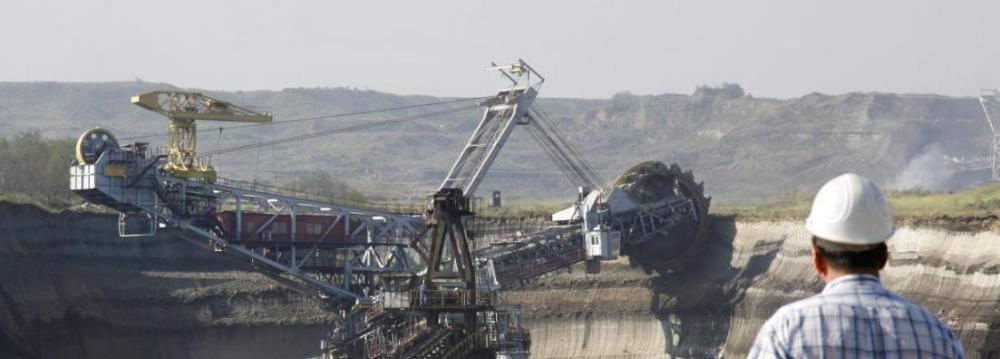About $6.5 billion worth of ores and mineral products were exported over the past Iranian year (ended March 20), Eghtesad-News quoted deputy minister of industry, mine and trade, Ja'far Sarqini as saying.
The deputy minister added that the export figure has been achieved despite the fact that the mining sector is far from its rightful position due to lack of funds.
According to Sarqini, in the course of more than two decades, the Geological Survey of Iran (GSI) implemented up to 200,000 linear kilometers of aerial explorations by March 20, 2013. "The figure exceeded 50,000 last Iranian year and we have targeted 300,000 linear kilometers for the current year," said the official.
The vast exploration operations were implemented last year over the eastern half of the country which led to the discovery of 250 million tons of iron ore reserves as well as 200 million tons of coal. Officials in the GSI, industry ministry, and the Iranian Mines and Mining Industries Development and Renovation Organization (IMIDRO) have announced that the operations will focus on western areas this year aimed at gathering basic information on reserves, so that the industry ministry can formulate plans for the mining sector.
Sarqini criticized the former policies in the mining sector which allowed certain individuals or mining firms to occupy large mining areas without implementing any operations to explore or extract minerals.
"An important policy the incumbent administration adopted in the mining sector since taking office was to confront and terminate unhealthy trades of exploitation concessions. Certain people had acquired concessions and had blocked large mining areas for five to 10 years, intending to sell the concessions later for profit. We have started to annul the concessions for such cases, he noted. "
Last year, a number of mining areas whose licenses had been annulled were offered by the industry ministry but were not welcomed by the private mining firms.
Sarqini said the industry ministry expects the private sector to cite the possible mistakes so that the ministry can revise the procedures.
The deputy industry minister emphasized that the administration seriously monitors the issue of concessions and grants the licenses and concessions only to individuals and companies with high financial and technical qualifications.
He said after the new exploration operations are accomplished, planning for the new reserves will enable the country's mining sector to substantially increase the steel output and move towards the National 2025 Vision Plan which requires the steel sector to annually produce at least 55 million tons of crude steel. According to industry ministry officials, achieving the goal also calls for equilibrium in steel production chain.
"Last Iranian year, the country needed to import 8 million tons of iron ore pellet while only 3 million tons were imported due to infrastructural shortages. On the other hand, the steel sector faced an 8-million-ton surplus of iron ore concentrate. This shows we have not been able to balance the value chain in the steel sector, Sarqini added. "


